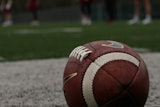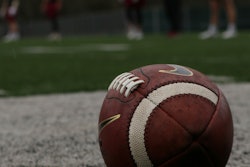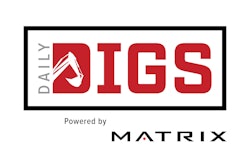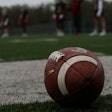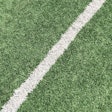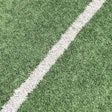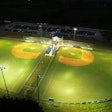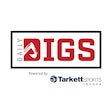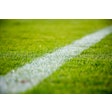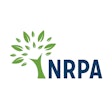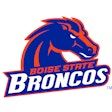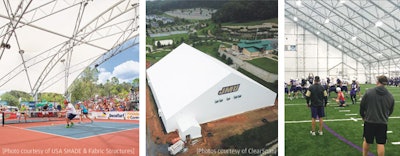
Fabric structures have always had selling points when compared to practice facilities constructed of glass, steel, brick and mortar — namely, they can be erected in a fraction of the time and at a fraction of the cost of traditional buildings. Not to be overlooked is the fact that fabric structures can provide for the safety and well-being of end users, too, and perhaps as well or better than conventional buildings. Here are three ways in which fabric structures stand tall for their occupants:
1. Protection from the sun
Like any indoor facility, the most obvious thing a fabric structure provides is shade. Whether covered in polyethylene or vinyl, a fabric structure provides athletes with UV protection and more tolerable temperatures while still allowing natural light into every corner of the interior space.
Well-documented cases of fatal heatstroke stemming from football practices held on outdoor practice fields emphasize the danger to athletes presented by certain climatic conditions.
RELATED: Product Spotlight 2019: Building Systems and Shade Structures
"Extreme heat and humidity are extremely dangerous," says Gregg Nelson, vice president of sales and marketing at Yeadon, a Minneapolis-based manufacturer of air-supported domes. "The Houston Texans, the Arizona Cardinals, and Arizona State University are all examples of programs that needed to extend their practice times into mid-day, when outdoor temperatures are at their peak, and to do so in an environment that was safe for players and staff."
And the concern isn't limited to football players. "Artificial turf tends to be about 10 degrees hotter than the air temp. Tennis courts can be 15 to 20 degrees hotter than the air temp," Nelson says, adding that pressurized Yeadon domes can be cooled (or heated), with abundant air circulation adding to the climate control. "We engineer the dome systems to the temperature delta requested by the customer. If it's 110 degrees outside, we can achieve 75 degrees inside with dry air."
"Our high-density polyethylene fabrics block up to 97 percent of UV rays," says Laura Chumah, product manager at USA Shade & Fabric Structures, headquartered near Dallas. "Our fabric shade structures protect the safety and wellbeing of athletes by helping to reduce their core body temperature during sporting events."
And that comfort level can lead to increased facility use. "We often see that when our structures are added to a previously unshaded area, people are more likely to use the space and stay longer as a result of the shade and increased comfort level," Chumah says.
2. Protection from disease
Fabric structures can be fully enclosed, open-ended or completely free of walls in a pavilion-like configuration. In any case, they can be designed to exchange air in ways a traditionally constructed building can't match.
"A lot of people think you get sick easier in the wintertime because of it being cold outside, but it's actually the fact that most buildings don't circulate the air well enough," says Geoff Ching, director of sales at Dyersville, Iowa-based ClearSpan Fabric Structures, which traces its lineage of structural-steel supported enclosures to the agriculture industry. "The more you can circulate the air inside of any space, the healthier it's going to be for people or animals inside."
RELATED: Purchasing Guide: Shade Structure
To help the circulation process, ClearSpan employs commercial-agriculture-grade exhaust fans, with each 48-inch fan capable of moving 21,000 cubic feet of air per minute, provided there's an opening on the opposite end of the structure. "You just run a calculation based on the size of the space inside and the frequency that you want the air exchanged," Ching says. "If you have 100,000 cubic feet of space inside a building, we can size the exhaust fan system so that you can exchange the air every 10 minutes, every five minutes, every two minutes."
While healthful for humans, the ventilation and natural light are a deadly combination for microbes. Says Ching, "Natural light and ventilation are going to prevent more of the bacteria and viruses from spreading as they might otherwise in a conventional structure."
3. Protection from inclement weather
Indoor practice space helps solidify practice schedules and athlete routines, which in theory keeps athletes in ideal performance condition and makes them less susceptible to injury. "As the climate is becoming less predictable, it gives you the certainty of being able to have practices and activities in a safe, secure environment," Ching says.
But in a more direct sense, fabric structures keep wind, rain and snow off of courts and turf, ensuring ideal playing conditions (read: footing) for athletes. Says Nelson, "Cold weather and wet conditions also pose safety risks to athletes, and in a dome it is always temperate and sunny."
RELATED: Find more solutions for your facility in the Buyers Guide
Moreover, an air-supported dome allows these advantages to be applied where needed and when, depending on the time of year. "If money were no object, most programs would opt for a brick-and-mortar field house with all the amenities," Nelson says. "The one advantage to an air-supported structure is that it can provide the option of putting it over a turf field seasonally. At Minnetonka High School in Minnesota, for example, they dome the football field so that the turf can be used all winter. Come spring, the dome is taken down so that the field is again visible to the bleachers and ready for soccer, lacrosse and football games."
Fabric structures truly offer the best of both worlds — the feeling of playing outdoors, while mitigating the risks. "In a conventional building, if you were to get an amazing light system and a really thorough HVAC or natural ventilation system, then you would probably be in pretty good shape, but the fact is that most buildings don't have that," Ching says. "In a fabric building, all you have to do is put a white cover over it. The cover filters the harmful UV for you, but you still get the sunlight, which eliminates dark corners and spaces. And when you combine that with ventilation, that gets you what we understand to be a much healthier environment for any sort of activity."
Pitch perfectProtection provided by a fabric structure takes many forms, from completely enclosed, air-supported domes to open-sided, pavilion-style covers — and applicable sports uses encompass everything from basketball to pickleball. Activities to be staged within the structure no doubt dictate what shape it must take, but subtle design considerations can make a big difference in terms of efficiency and feel. For example, if the roof over a tennis court has a pitch of 2/12 (meaning it rises vertically 2 inches for every 12 inches it extends horizontally) and that puts the apex of the interior ceiling at 30 feet above the net, changing the pitch to 7/12 would add another 20 feet to the interior building height and a less claustrophobic experience for players. Roof pitch can also be specified for its impact on the height of a structure's sidewalls. To achieve the same apex height, a 2/12 roof will require taller sidewalls than a 7/12 roof. This might be desirable for indoor baseball practice, for example, but can be inefficient spatially for football. Because most of the highest airborne activity in the latter sport is primarily centered over the length of the field, a 7/12 pitch allows for lower sidewalls and less wasted interior space. |
This article originally appeared in the June 2019 issue of Athletic Business with the title "3 advantages to specifying fabric structures for sports applications." Athletic Business is a free magazine for professionals in the athletic, fitness and recreation industry. Click here to subscribe.














